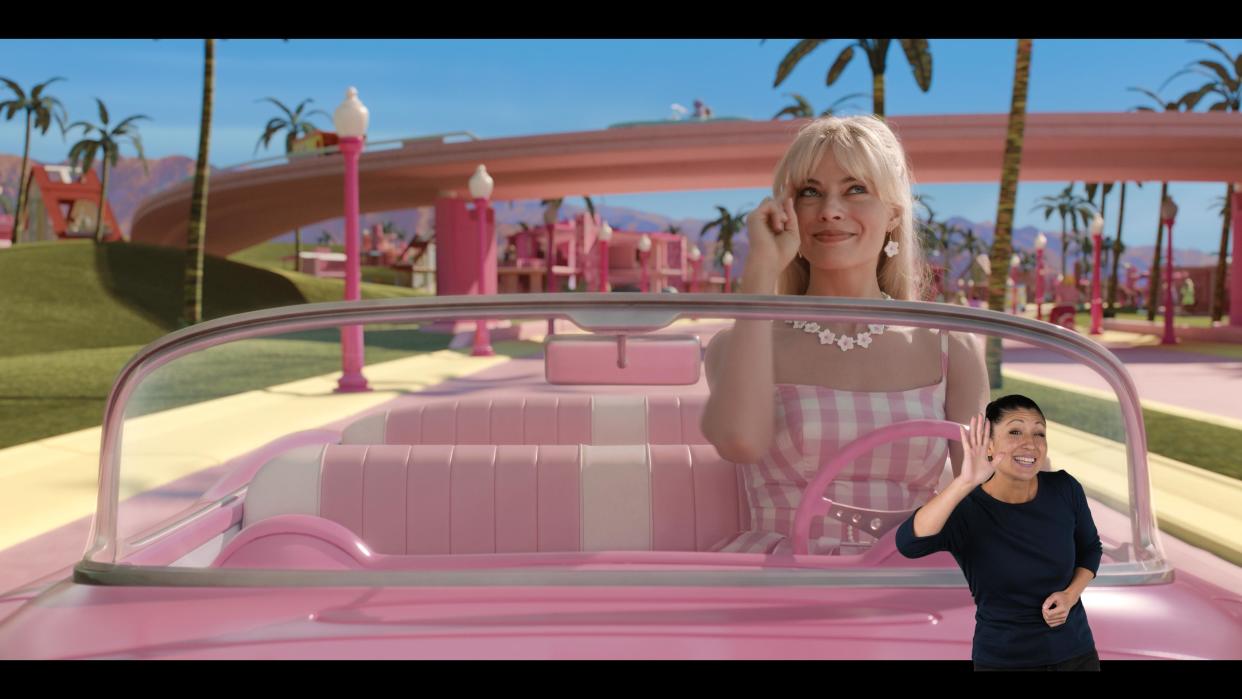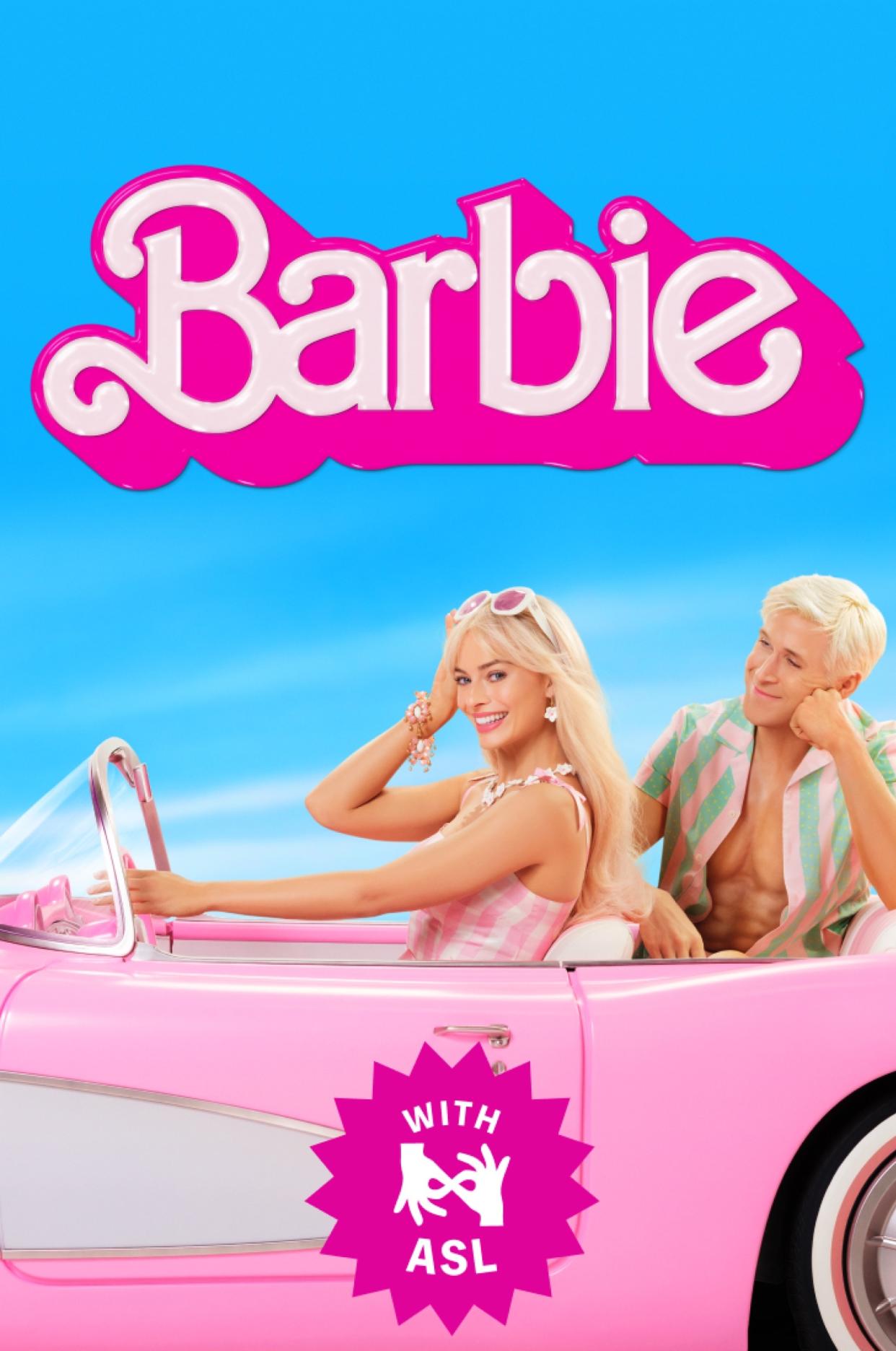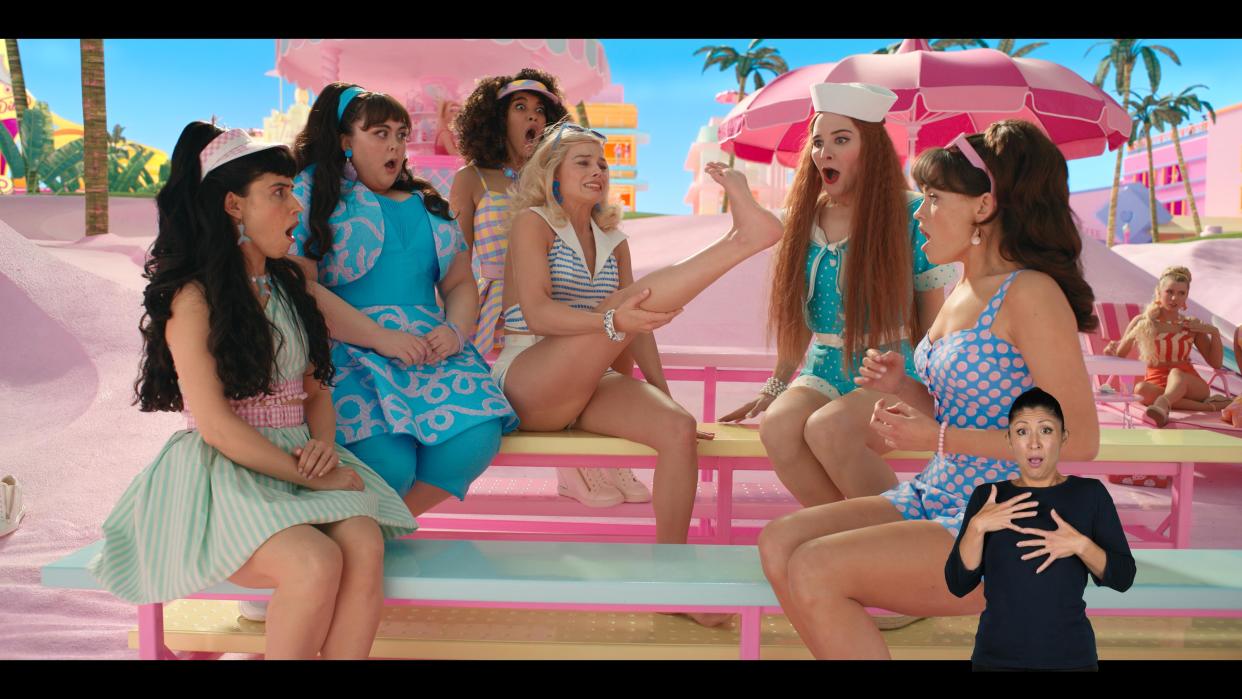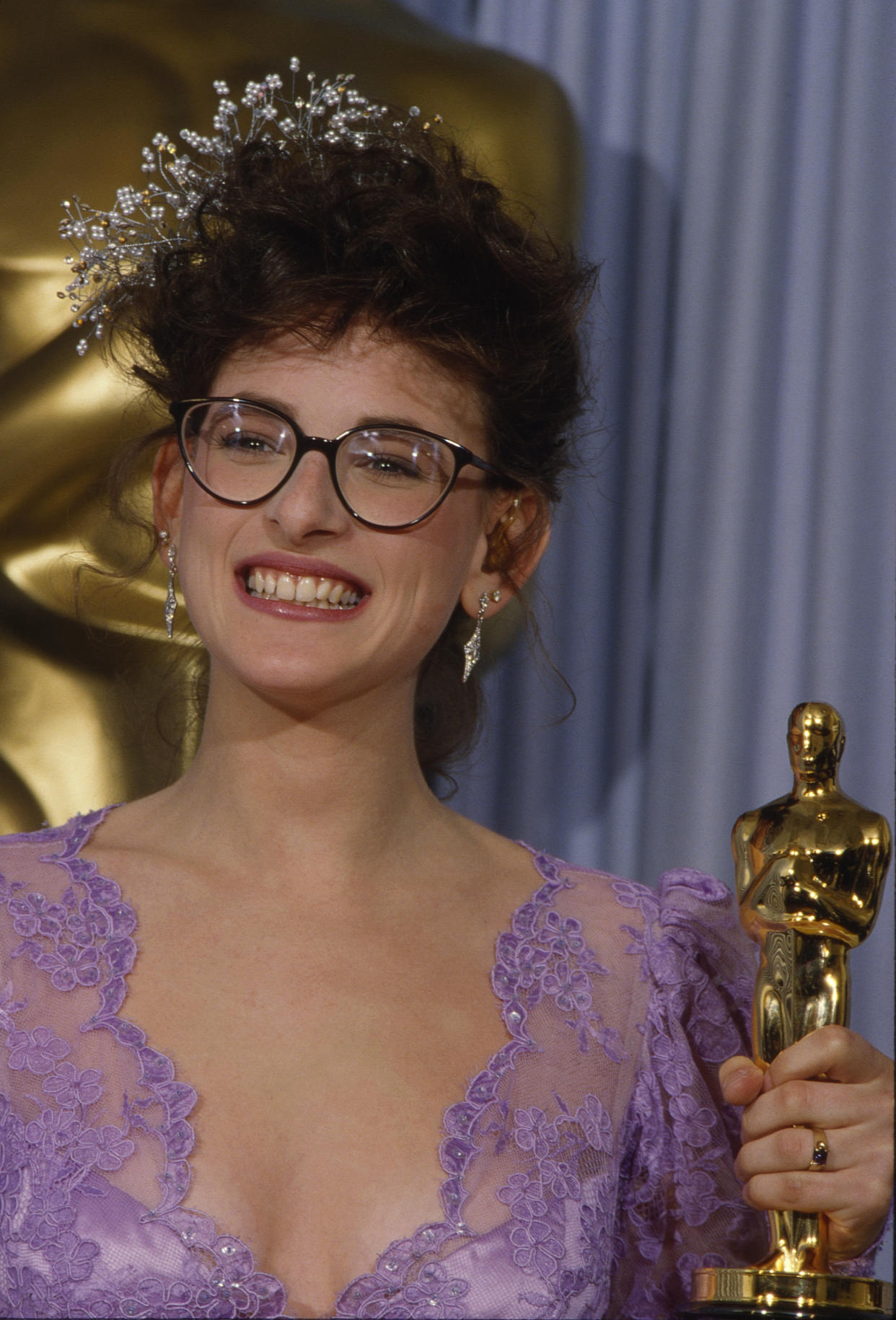'Barbie' with ASL: What to know about the film version and its interpreter's goal to make 'Deaf children feel seen'

Greta Gerwig’s Barbie is setting a new precedent for Deaf representation in its streaming debut. In tandem with the original theatrical cut, Warner Bros. and Max also released an American Sign Language (ASL) version on Friday.
Located in the versions tab on the film's landing page on Max, Barbie with ASL features Leila Hanaumi, a deaf performer who appears on the bottom right corner of the screen. As Barbie and her friends attempt to rescue Barbie Land from threats, Hanaumi signs in sync with the characters, offering an immersive watching experience for deaf audiences that goes far beyond what English subtitles provide (though that's an option, too).
Well known for her viral song interpretations on social media, Hanaumi calls it a watershed moment not just for the future of cinema, but for the Deaf community as a whole.
“I hope Barbie with ASL makes Deaf children feel seen,” she tells Yahoo Entertainment. “I hope it sends the message that Deaf people and sign language have a place in the world. I hope it is a stepping stone to a transformative approach to accessibility and inclusivity.”

Those feelings are shared by Naomi Waibel, senior vice president of global product management at Warner Bros., who reaffirms the significance of what representation can do for the underserved.
“We've all felt out of place at some point in our lives, especially as kids, she tells Yahoo Entertainment. “The characters and toys that we grow up with help to shape what we think is possible for us. Diversity and representation helps us all unlock our potential, in Barbie Land and beyond.”
How did Barbie with ASL come to life?
Waibel says when team members pitched the idea to incorporate ASL as an additional language for the streaming version of Barbie, it was a no-brainer.
“We started the way we always start, with customer research,” she explains. "We conducted benchmarking studies and reached out to members of the Deaf community to better understand what would be most important to them for this feature.”
Using that research, Waibel and her team put together a pitch deck with the overall vision for the ASL experience.
“Every conversation we had with partner teams and executives across the company was like a snowball of positivity, confirming our belief that this should happen,” she says. “Before we knew it, we had funding, talent engaged and product implementation committed.”
Once Hanaumi was attached, Waibel says, the plan became fully realized.
“The most powerful moment for me throughout this project was when Leila explained to my team why this mattered to her,” she says. “She said that growing up watching movies, she didn't think that ASL or Deaf people even exist in these movie worlds. I think many people can resonate with that feeling in different ways. That's why representation is important. It's an opportunity to see oneself in a different context and imagine what's possible."
Signing with Barbie
“The work of translating Barbie into ASL was intensive,” explains Hanaumi. She spent hours with her ASL coach, Jac Cook, who helped translate every line to authentically capture the emotional depth expressed by Margot Robbie as Barbie, Ryan Gosling as Ken and the rest of the cast in Barbie Land.
“My goal as an ASL performer for this movie was to convey the lines, emotion, tone and meaning as authentically as possible,” she says. “The movie is filled with cultural references and social and political messages, and it took a team to ensure that my performance captured all the nuances.”
Getting the details right was Hanaumi and Cook’s primary goal.

“I would record myself interpreting each scene and send the video clips to [Cook], and she would in turn send me videos back with her feedback and suggestions,” she says of the weeks-long process, which also included role-shifting, or the positioning of the interpreter's body to signal who the speaker is onscreen, as well as coaching on Hanaumi’s demeanor and signing style to create a more engaging experience.
“The process was a hybrid between interpreting and acting, resulting in an ASL performance that is unique from other types of interpreting work,” Hanaumi says.
Their hard work paid off.
“Barbie is a cultural phenomenon,” she says. “Making the movie accessible in ASL shows that it is nonnegotiable that the Deaf community is part of the movement [for representation]. It sends the message that accessibility and inclusivity are no longer afterthoughts but core values of successful studios.”
Deaf representation in Hollywood
Going back decades, deaf characters were typically portrayed by hearing actors — with minor exceptions, like 1948’s Johnny Belinda, where deaf characters played central roles.
The success of 2022’s Oscar-winning film CODA, starring deaf actors Troy Kotsur and Marlee Matlin, brought the issue of Deaf representation in film to new heights.
A 2022 report from the National Research Group showed that 79% of deaf people believe there's been more representation in TV and film than there was in 2021, with 45% saying that Deaf representation has improved “a lot” over that time period.
According to Variety, CODA was the most significant representation of the Deaf community since 1986's Children of a Lesser God, which also starred Matlin and for which she won an Oscar.
Matlin's achievement was a turning point in Deaf representation. Over the years, she's used her platform to advocate for representation across all industries.

“It's a lot of work, and it doesn't come easy,” she told a group of deaf and blind students in March about her journey in Hollywood. “Characters developed for deaf actors aren't necessarily applicable. They have to think about the creating and writing, figuring out how they're going to be incorporated.”
Others, like deaf model and author Nyle DiMarco, have also spoken about challenges deaf actors face in Hollywood, pointing to Kotsur's Oscar-winning role in CODA as an opportunity for filmmakers to step up.
“We need this moment to be something bigger. We need it to be the linchpin for a broader movement, the first swell of a tidal wave of opportunities for Deaf people in entertainment,” he told Today in March 2022. “To me, the key to turning this moment into a movement includes putting Deaf people behind the camera. In producer roles. In the writer's room. As directors, closing their index and middle fingers like a pair of scissors, to yell ‘Cut!’”
'We can be part of each other's worlds'
Hanaumi hopes more filmmakers take a lesson from Barbie's playbook, insisting that inclusion for all audiences is vital in shaping a better world.
“When future filmmakers start thinking about the stories they want to tell, include Deaf and disabled people in the process, whether it's imagining them as the audience or creating a space for them within the stories," she says. “We exist. And we can be part of each other's worlds."
When those who are deaf are able to “channel” the nuanced storytelling through thoughtful ASL interpretation, Waibel says, it creates a new kind of ownership that lasts.
By “experiencing [Barbie] in their first language,” she says, “we hope children, parents and others in the Deaf community feel seen and empowered.”
The theatrical cut of Barbie, as well as the ASL version, are now available to stream on Max.


